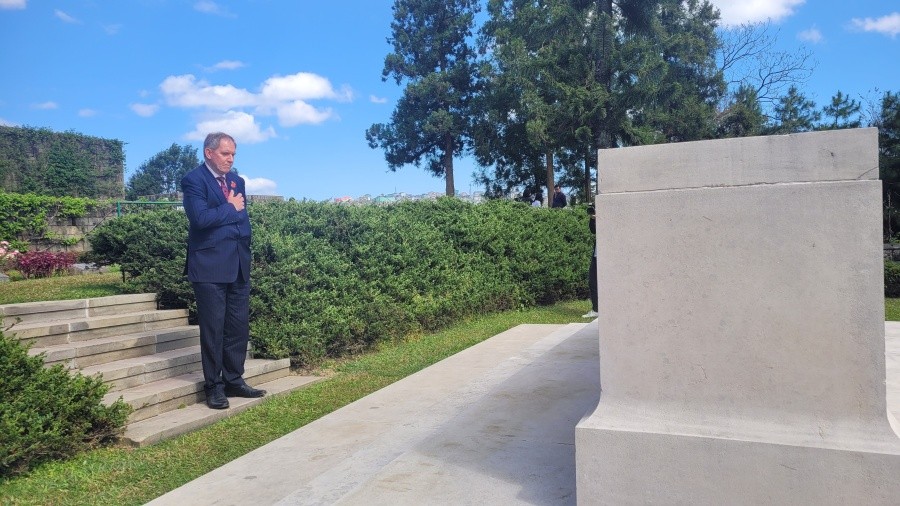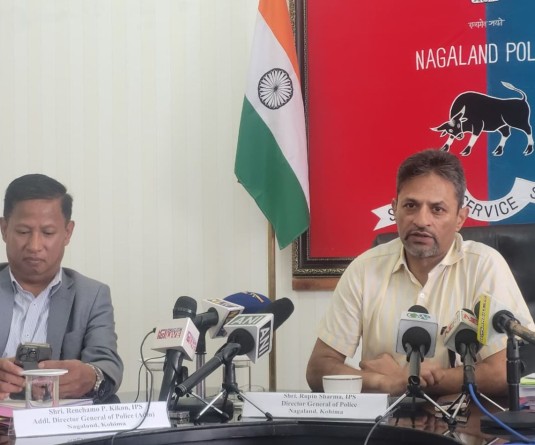Nick Low during a visit to Commonwealth War Cemetery Kohima on November 11. (Morung Photo)

Our Correspondent
Kohima | November 11
Nick Low, British Deputy High Commissioner to Kolkata visited Commonwealth War Cemetery in Kohima and paid homage to the brave soldiers on November 11 at 11 hours 11 minutes.
“Occasionally you have the opportunity to do something that you will remember for the rest of your life. Laying a wreath at the Kohima War Cemetery at the eleventh hour of the eleventh day of the eleventh month is such a moment. And a huge honour, I do so in honour of all those who fell here and for the veterans who had hoped to be in Kohima on the seventy-five anniversary of the battle but were prevented by the pandemic,” he said.
He laid a wreath in memory of all the brave soldiers on the occasion of Remembrance Day.
Later, talking to media persons, the British Deputy High Commissioner described Kohima as the most beautiful place and would cherish forever in his life.
Low said that he was honour to pay tribute to remember and to reflect on all the soldiers from across the commonwealth from his country the United Kingdom, from across India and South Asia, from Australia, Canada and from elsewhere who gave their lives.
Stating that he had known the name of Kohima since he was a young man, he said “This is the most beautiful place. It will live in my heart forever.”
He thanked the Government of Nagaland for facilitating and welcoming him to the beautiful city of Kohima.
About Remembrance Day
On the eleventh hour of the eleventh day of the eleventh month in 1918 the guns of Europe fell silent.
After four years of bitter fighting, The Great War was finally over. The Armistice was signed at 05:00 am in a railway carriage in the Forest of Compiegne, France on November 11, 1918. Six hours later, at 11:00 am, the war ended.
The first Remembrance Day was conducted in 1919 throughout Britain and the Commonwealth.
Originally called Armistice Day, it commemorated the end of hostilities the previous year. It came to symbolize the end of the war and provide an opportunity to remember those who had died.
In a letter published in the London Evening News on 8 May 1919, an Australian journalist, Edward George Honey, had proposed a respectful silence to remember those who had given their lives in the First World War.
This was brought to the attention of King George V and on 7 November 1919, the King issued a proclamation that called for a two-minute silence:
After the end of the Second World War in 1945 Armistice Day became Remembrance Day to include all those who had fallen in the two World Wars and other conflicts.
Since 1919, on the second Sunday of November, otherwise known as Remembrance Sunday, a two-minute silence is also observed at 11am at war memorials, cenotaphs, religious services and various public places throughout the UK and across the Commonwealth.




